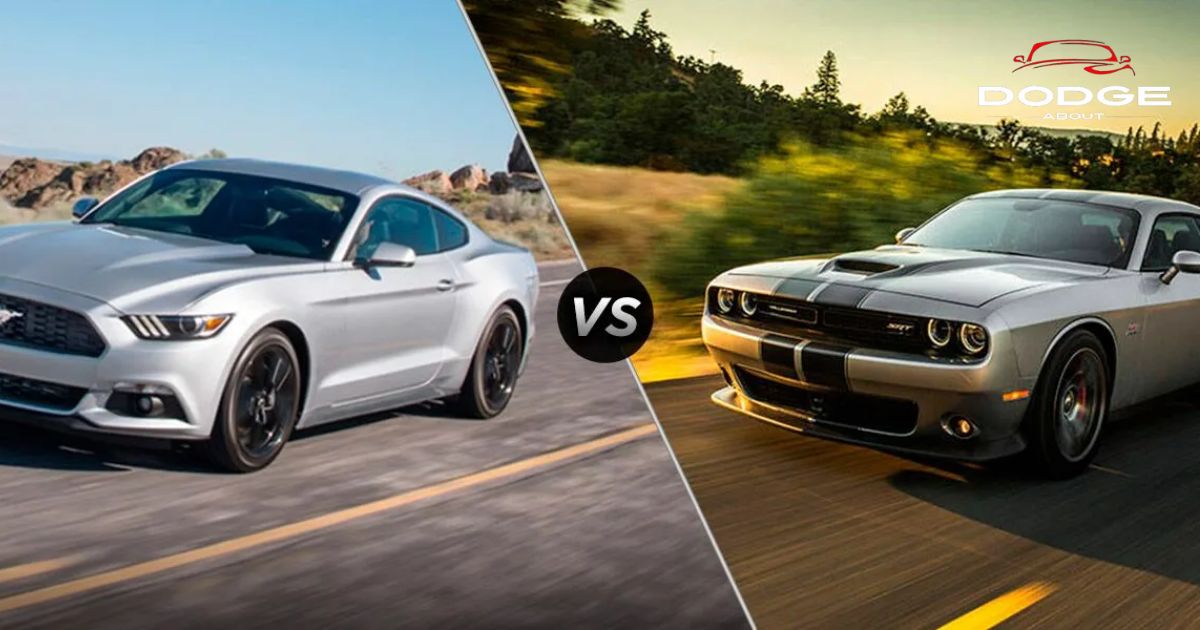The Dodge Charger and Challenger are iconic American muscle cars produced by the Dodge brand. They are known for their powerful performance and distinctive, aggressive styling. The Charger is a four-door sedan, while the Challenger is a two-door coupe. Both models offer a range of high performance engine options, delivering exhilarating speed and a classic muscle car experience.
Ever wondered about the big differences between a Dodge Charger and Challenger? These two cars are like siblings in the muscle car world, sharing a family resemblance. But each having its own distinct style and performance. So let’s dive into the exciting world of these cars and discover what sets the Dodge Charger and Challenger apart, making them stand out in the realm of cool and powerful rides.
The Dodge Charger and Challenger have a strong presence in the automotive enthusiast community and continue to be popular choices for those seeking a blend of style and performance. It’s like comparing two superheroes. They may have similar powers, but they use them in their own unique ways.
Popularity and iconic status of the Dodge Charger and Challenger
The Dodge Charger and Challenger have earned legendary status in the automotive world, each carving its niche in the hearts of car enthusiasts worldwide. The Charger, with its four-door design and powerful presence, appeals to those seeking a blend of muscle and practicality. Its popularity soared through appearances in movies and TV shows, cementing its iconic status.
On the other hand, the Challenger embodies the classic two-door muscle car spirit, capturing the essence of a bygone era with a modern twist. Its retro-inspired design, reminiscent of the original Challenger from the 1970s, struck a chord with fans of vintage muscle cars, contributing to its enduring appeal.
Both models share a common thread of high-performance engines, delivering an adrenaline-pumping driving experience. Their popularity extends beyond the automotive realm, permeating popular culture and solidifying the Dodge Charger and Challenger as symbols of American muscle prowess.
Historical background of Dodge Charger
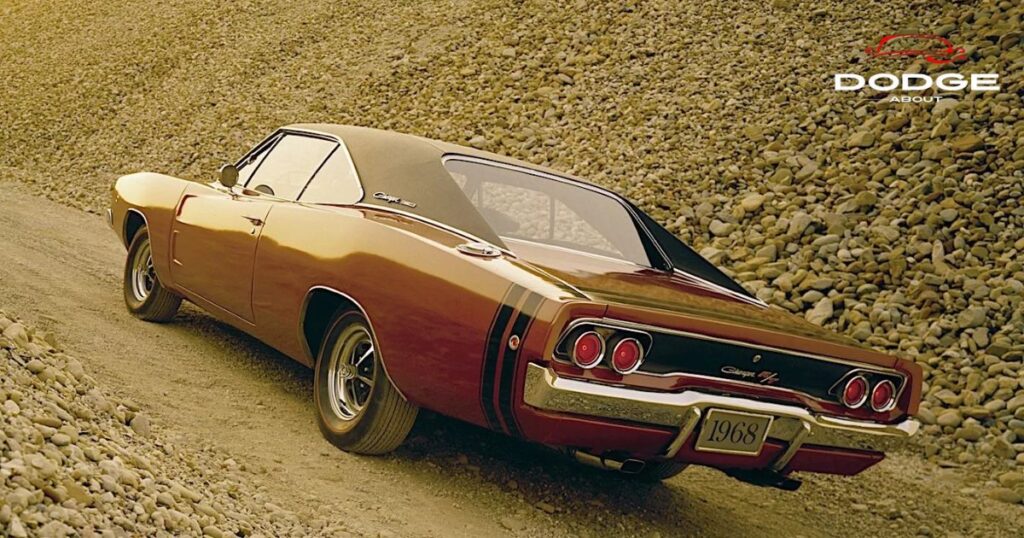
The Dodge Charger has a rich historical background that dates back to the 1960s. It was first introduced by Dodge in 1966 as a response to the growing demand for powerful and stylish muscle cars.
The early models of the Charger were known for their distinctive fastback design and powerful engine options. Throughout the years, the Charger underwent various transformations, adapting to changing automotive trends. Notably, the 1968 Charger became an icon with its appearance in the movie Bullitt.
The Charger has continued to evolve over the decades, with different generations bringing new design elements and performance features. Today, the Dodge Charger stands as a symbol of American muscle and performance, blending its historical roots with modern innovations.
Notable design changes over the years
The Dodge Charger has witnessed significant design changes over the years. From its sleek fastback look in the 1960s to angular and aggressive styles in the 1970s, the Charger’s design has adapted to reflect both contemporary trends and its muscle car heritage.
The 21st century reintroduction in 2006 brought back iconic features like the crosshair grille, blending nostalgia with modern aesthetics. Subsequent generations continued to evolve, featuring sleek profiles and updated detailing. Throughout its history, the Charger’s design has remained dynamic, successfully merging the past with present automotive aesthetics.
Historical background of Dodge Challenger

The Dodge Challenger has a compelling historical background rooted in the American muscle car era. Introduced by Dodge in 1970, the Challenger was designed to compete with other iconic muscle cars of the time. Its debut coincided with a period of intense competition among automakers striving to produce high performance vehicles.
The early models of the Challenger were characterized by a range of powerful engine options and distinctive styling, including bold colors and aggressive lines. The Challenger also gained recognition through its participation in various motorsports events, contributing to its reputation as a formidable performance car.
As with many muscle cars, the Challenger faced challenges during the oil crisis of the 1970s, leading to changes in its design and engine offerings. The production of the original Challenger ceased in 1974.
In 2008, Dodge resurrected the Challenger, capturing the essence of the original while incorporating modern engineering and design elements. The revived Challenger embraced its heritage, offering a lineup of high performance variants, including the SRT and Hellcat models with incredibly powerful engines.
Today, the Dodge Challenger stands as a testament to the enduring legacy of American muscle cars, blending nostalgia with contemporary performance and design. Its history reflects the ebb and flow of automotive trends, with the Challenger maintaining its status as an iconic symbol of power and style.
Notable design changes over the years
The Dodge Challenger has changed its look quite a bit over the years. In the 1970s, it started with a strong and tough appearance, with cool features like dual-scooped headlights. In the late ’70s, it got a bit smaller to meet fuel efficiency rules.
After a break, it came back in 2008, bringing back the classic style that people loved. The new Challengers still have that strong and muscular look, with modern touches. They even made special editions like the Hellcat and Demon with super powerful engines. So, the Challenger’s design has evolved over time, keeping the cool and tough vibes alive.
Dodge Charger exterior features and Unique design elements
The fast Dodge Charger has a tough and cool exterior. It’s big and has a strong style, showcasing its speed and performance. The front has a wide grille and the back has cool LED lights that go all the way across. The Charger comes in different colors and its wheels look really cool too.
In its design, the Charger has special things that make it different. One is the special grille at the front, shaped like a cross, making it stand out. The lights at the back are also special. They are long and make the car easy to recognize. The Charger also has two exhaust pipes, adding to its sporty look. All these special details make the Dodge Charger a unique and powerful car on the road.
Dodge Challenger exterior features and Unique design elements
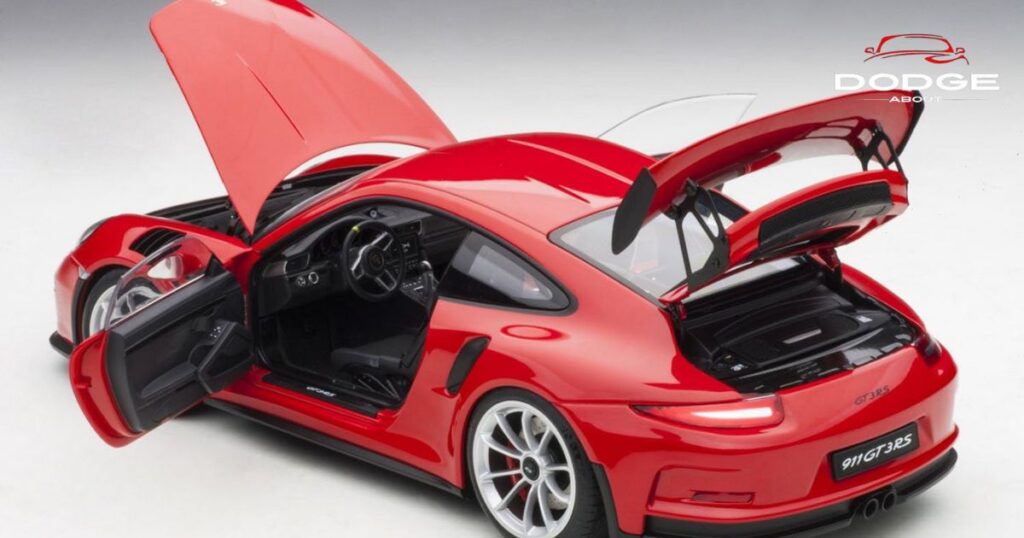
The Dodge Challenger looks tough and strong on the outside. It’s wide and has a cool style that makes it stand out. The front has a big grille and mean-looking headlights, making it look powerful. The shape of the car is sporty and strong, with lines that show it’s really fast. You can choose different colors for the Challenger, and the wheels look really cool.
In its design, the Challenger has special things that make it different and cool. One is the double scoops on the hood, which not only look awesome but also show that the car is super-fast. It also has a retro-style gas cap and cool stripes on the side, giving it a classic muscle car vibe.
The headlights are modern and have a halo, making the Challenger look both old-school and new. All these special details make the Dodge Challenger a standout and classic-looking car.
Dodge Charger Engine Options & Performance
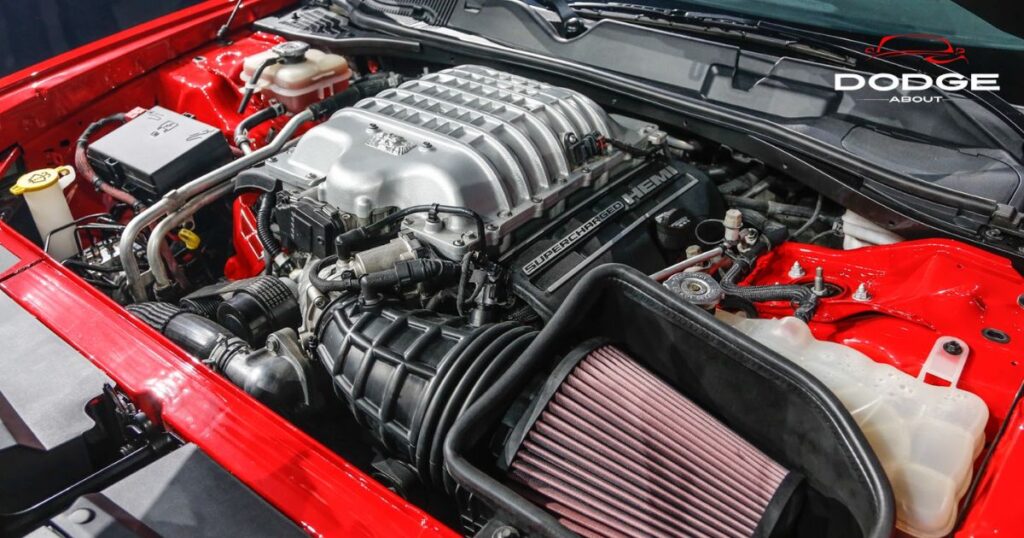
The Dodge Charger offers a variety of engines for drivers to choose from. These include efficient V6 options and powerful V8 engines. Drivers can select the engine that suits their preferences, whether it’s a balance of efficiency or high-performance capabilities.
When it comes to performance, the Charger lives up to its muscle car reputation. The available engines provide impressive horsepower and torque, ensuring quick acceleration and dynamic driving experiences.
The potent V8 options, in particular, deliver remarkable speeds for both daily driving and thrilling moments on the open road. Advanced engineering and technology contribute to precise handling, making the Charger a high-performance sedan that offers an engaging and exciting driving experience.
Dodge Challenger Engine Options & Performance
The Dodge Challenger can have different types of engines. Some are like V6, which is good for everyday driving, balancing power and saving fuel. Then there are V8 engines for people who want a really fast and exciting driving experience. These engines make the Challenger go really quick and feel strong on the road.
The V8 engines, especially, give the Challenger a powerful and thrilling performance. They work with different transmission systems, like automatic or manual, so drivers can choose how they want to drive. In simple terms, the Dodge Challenger lets you pick an engine that suits your driving style. Whether you want a mix of power and efficiency or a full-on high speed adventure.
Technical Differences between Dodge Charger and Challenger

The Dodge Charger and Challenger are different in how they look and work. The Charger is like a family car with four doors, providing more space for people in the back. It is bigger and more balanced in how it distributes its weight. On the other hand, the Challenger is a smaller car with two doors, giving it a sporty and classic appearance. Because it’s smaller, it might feel quicker and handle turns better.
When it comes to driving, the Charger usually has an automatic transmission with eight speeds, making it smooth and easy to drive. Meanwhile, the Challenger might have a manual transmission with six speeds, offering a more hands-on and engaging driving experience.
If you need a car for your family and want more room, the Charger is a good choice. It has a larger trunk for carrying things, making it practical for everyday use. The Challenger, with its sporty look, is more about fun driving and might not have as much space in the back or in the trunk.
Dodge Charger and Challenger have different styles and features, and they can be customized in various ways. It’s like choosing between a modern family car (Charger) or a cool, classic sports car (Challenger). It depends on what you like and what you need in a car.
Dodge Charger: Interior design and comfort features
The inside of the Dodge Charger is designed to be comfortable and stylish. The seats are roomy and cozy, providing a pleasant experience for both the driver and passengers. The dashboard is laid out in a way that makes it easy to use, with convenient buttons and controls. The overall design creates a modern and appealing interior.
In terms of comfort features, the Dodge Charger comes equipped with technology that enhances the driving experience. The seats are adjustable for personalized comfort, and the climate control system allows you to set the perfect temperature inside the car. These features, along with other conveniences, contribute to making the interior of the Dodge Charger a comfortable and enjoyable space for drivers and passengers alike.
Dodge Challenger: Interior design and comfort features
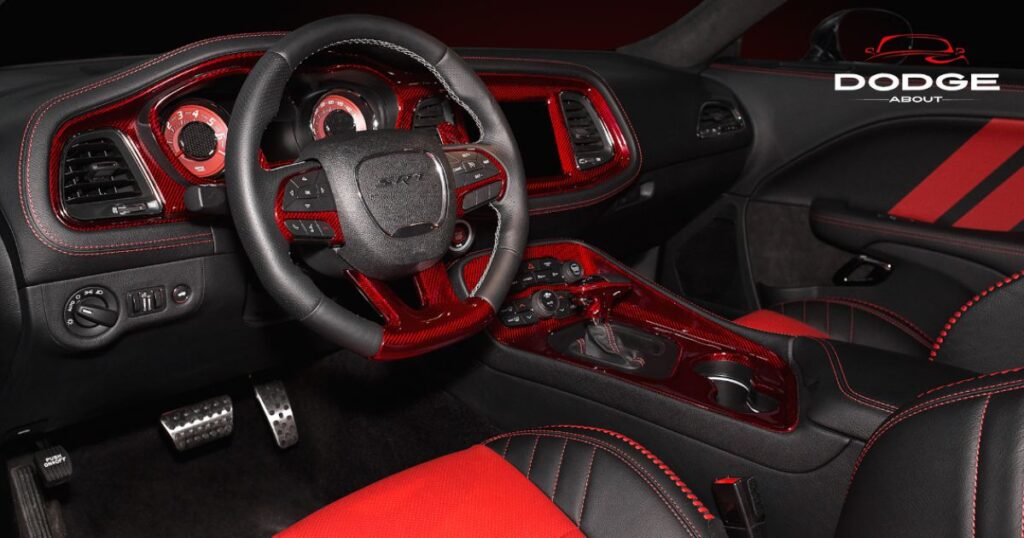
The Dodge Challenger’s interior is designed for comfort and style. Inside, you’ll find spacious and comfortable seats that make for an enjoyable ride. The layout is thoughtfully designed, with easy-to-reach controls on the dashboard, creating a driver-friendly environment. The interior design blends a modern aesthetic with classic touches, giving the Challenger a distinctive look.
When it comes to comfort features, the Dodge Challenger doesn’t disappoint. The seats are designed for comfort, providing support during longer drives. The cabin is equipped with modern technology, including user-friendly infotainment systems and touchscreen displays for easy control of various functions.
The Challenger offers amenities like climate control to ensure a pleasant driving experience in different weather conditions. Overall the interior design and comfort features of the Dodge Challenger contribute to an enjoyable and stylish driving experience.
Dodge Charger and Challenger Specs: Power, Performance, and Efficiency
The power, performance, and efficiency of Dodge Charger and Challenger models can vary significantly based on the specific trim level and engine options. Here’s a general overview of the power, performance, and efficiency for both models.
Dodge Charger
Base Engine (SXT):
- Engine: 3.6-liter V6
- Power: Approximately 292 horsepower (hp) to 300 hp
- Performance: 0-60 mph in around 6.4 to 6.2 seconds
- Efficiency: Varies, but typically ranges from 19-23 mpg city / 30-31 mpg highway
R/T:
- Engine: 5.7-liter V8
- Power: Around 370 hp
- Performance: 0-60 mph in approximately 5.1 seconds
- Efficiency: Generally lower than the V6, around 16-19 mpg city / 25-30 mpg highway
Scat Pack:
- Engine: 6.4-liter V8
- Power: Approximately 485 hp
- Performance: 0-60 mph in about 4.1 seconds
- Efficiency: Expect lower fuel efficiency, around 15-18 mpg city / 24-30 mpg highway
SRT Hellcat:
- Engine: Supercharged 6.2-liter V8
- Power: 707 hp
- Performance: 0-60 mph in approximately 3.5 seconds
- Efficiency: Lower fuel efficiency, around 12-15 mpg city / 21-22 mpg highway
Dodge Challenger
Base Engine (SXT):
- Engine: 3.6-liter V6
- Power: Similar to Charger, around 292 hp to 305 hp
- Performance: Comparable to Charger, around 6.4 to 6.2 seconds for 0-60 mph
- Efficiency: Similar to Charger, ranging from 19-23 mpg city / 30-31 mpg highway
R/T:
- Engine: 5.7-liter V8
- Power: Similar to Charger R/T, around 370 hp
- Performance: Comparable to Charger R/T, around 5.1 seconds for 0-60 mph
- Efficiency: Similar to Charger R/T, around 16-19 mpg city / 25-30 mpg highway
Scat Pack:
- Engine: 6.4-liter V8
- Power: Similar to Charger Scat Pack, around 485 hp
- Performance: Comparable to Charger Scat Pack, around 4.1 seconds for 0-60 mph
- Efficiency: Similar to Charger Scat Pack, around 15-18 mpg city / 24-30 mpg highway
SRT Hellcat:
- Engine: Supercharged 6.2-liter V8
- Power: Similar to Charger Hellcat, 707 hp
- Performance: Comparable to Charger Hellcat, around 3.5 seconds for 0-60 mph
- Efficiency: Similar to Charger Hellcat, around 12-15 mpg city / 21-22 mpg highway
Remember that these figures are approximate and can vary based on specific model years and configurations. In the 2023 models of the Dodge Charger and Challenger, a notable distinction lies in their transmission options. The Dodge Challenger features a standard six-speed manual transmission in its naturally-aspirated V-8 trims, whereas the Charger is equipped exclusively with an eight-speed automatic transmission. It’s worth noting that, despite this, the Charger proves to be the more fuel-efficient choice in R/T and Scat Pack trims.
Which is better Dodge Charger or Challenger?
It depends on your priorities. The Charger is more practical with four doors, while the Challenger is a classic two-door with a sportier appeal. Choose based on your lifestyle and preferences.
What is the difference between a Dodge Hellcat and a Challenger?
The Dodge Hellcat is a high-performance engine available in both the Dodge Charger and Challenger models. The key difference is that the Challenger is a two-door coupe, while the Charger is a four-door sedan.
Which Dodge has 1,000 hp?
The ‘H1000’ Dodge Charger Hellcat Redeye, tuned to have 1000 horsepower by Hennessey Performance, is a super exciting and amazing car. It’s got a lot of power and handles really well, making it an incredible machine.
Is a Dodge Charger a luxury car?
No, the Dodge Charger is not typically classified as a luxury car. It is often considered a performance oriented or muscle car, known for its powerful engines and bold design. Luxury cars typically prioritize comfort, advanced technology, and high-end materials, which may not be the primary focus of the Dodge Charger.
Why do people love Dodge Chargers?
People love Dodge Chargers for their iconic design, powerful performance, and association with American muscle car culture, creating an exciting and nostalgic driving experience.
Conclusion
The Dodge Charger and Challenger, while sharing a family resemblance, cater to different tastes. The Charger, with its four-door setup, offers a practical mix of muscle and everyday use. Meanwhile, the Challenger embraces the classic two-door muscle car vibe, providing a raw and nostalgic driving experience.
Your choice between Dodge Charger and Challenger depends on your priorities and preferences. The Charger is for those who seek a blend of power and practicality, while the Challenger is for enthusiasts who crave a more traditional, aggressive design. Both contribute to the rich legacy of American muscle in their own unique ways.

